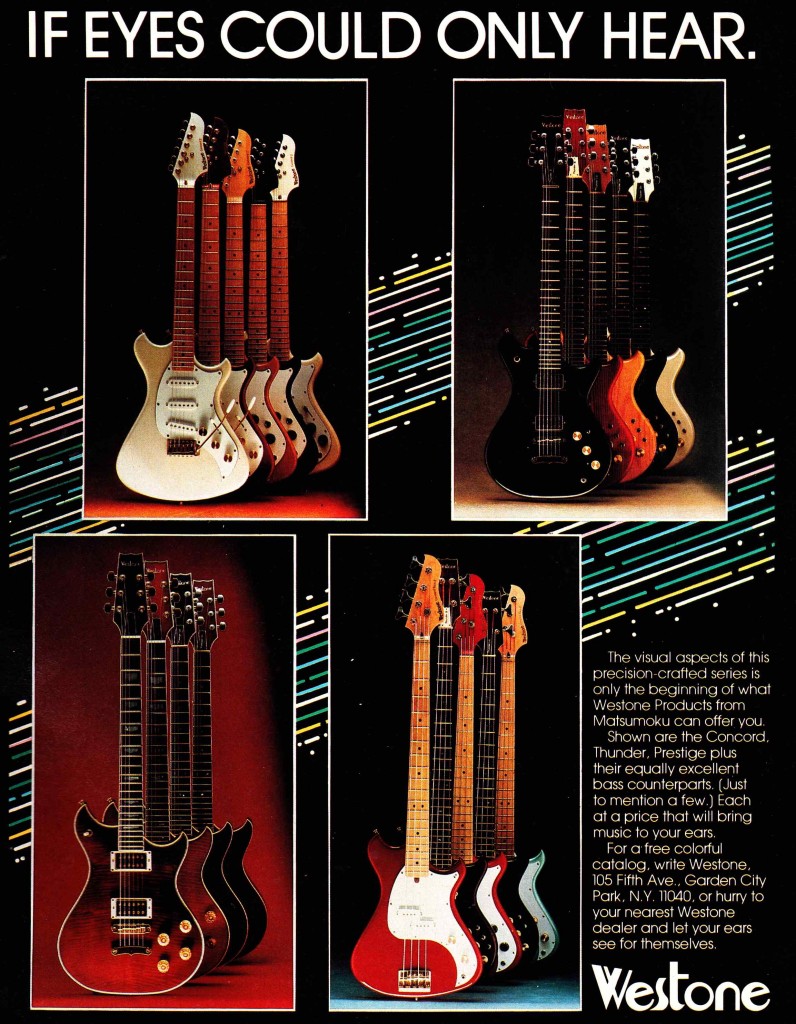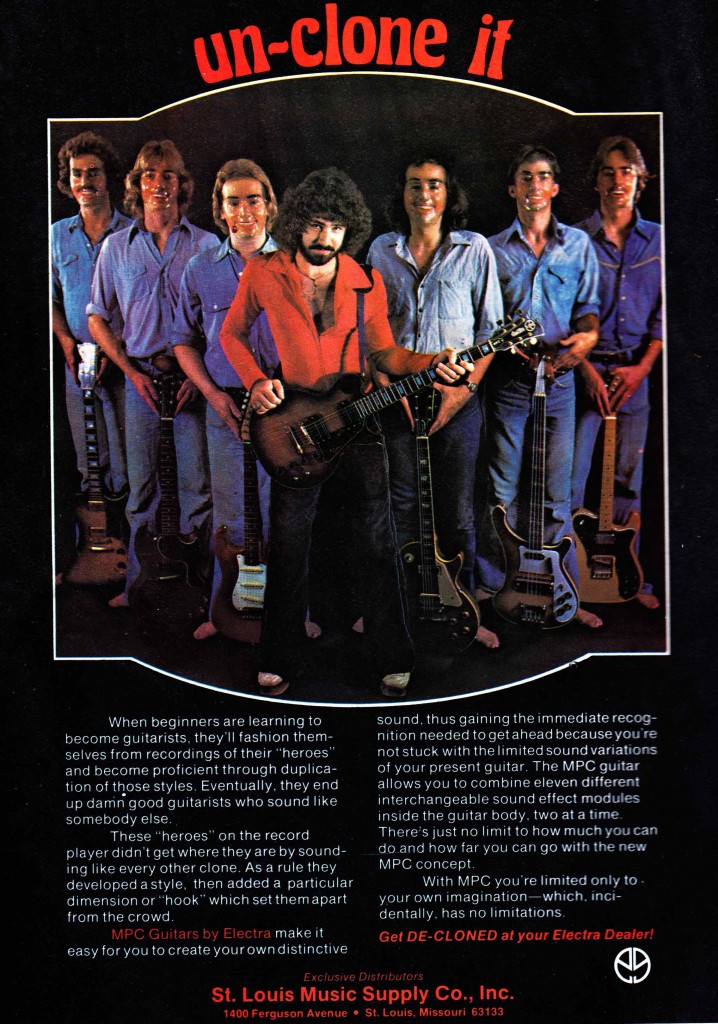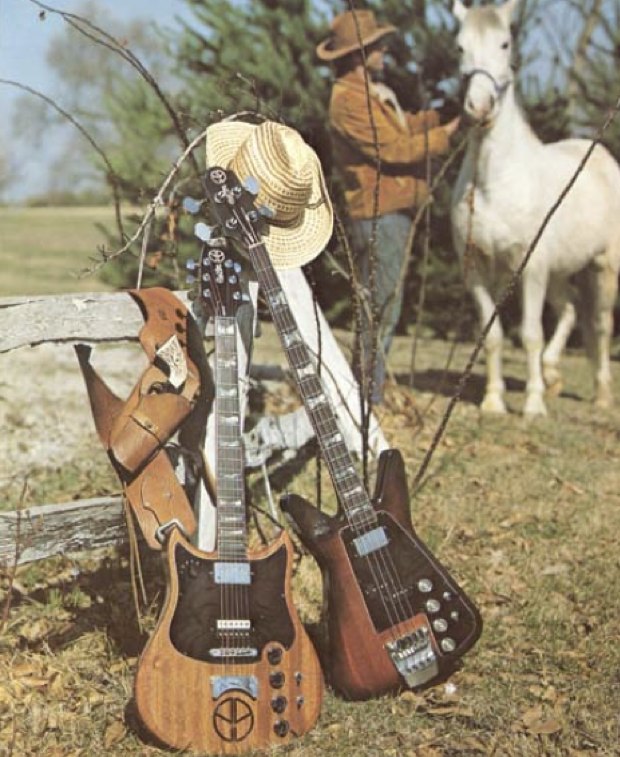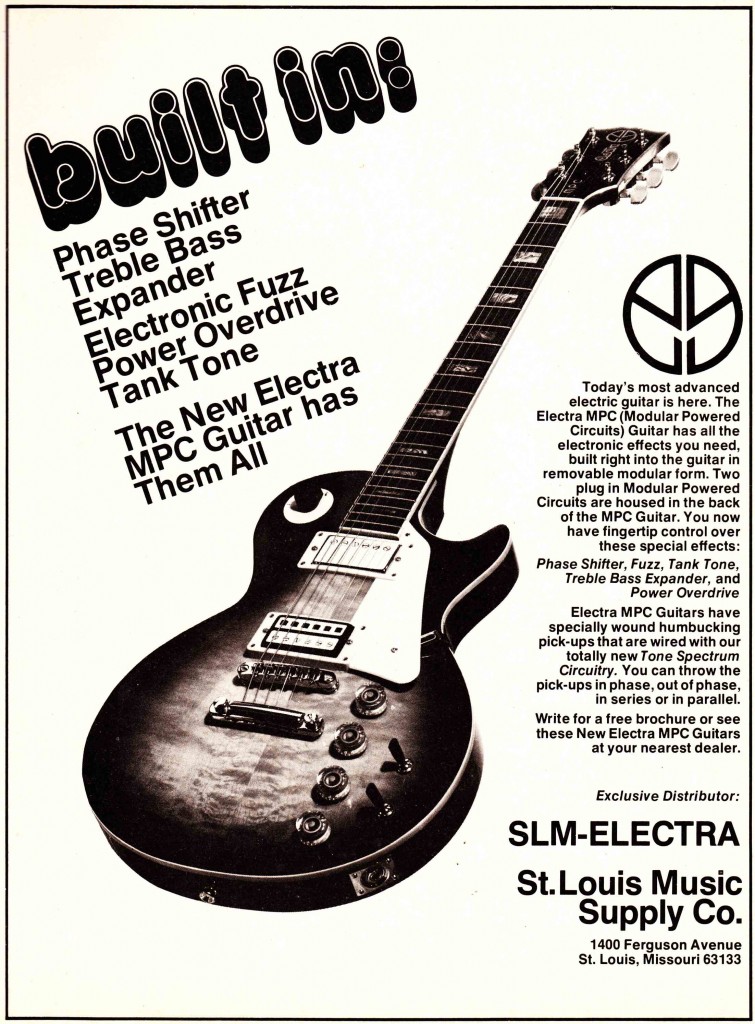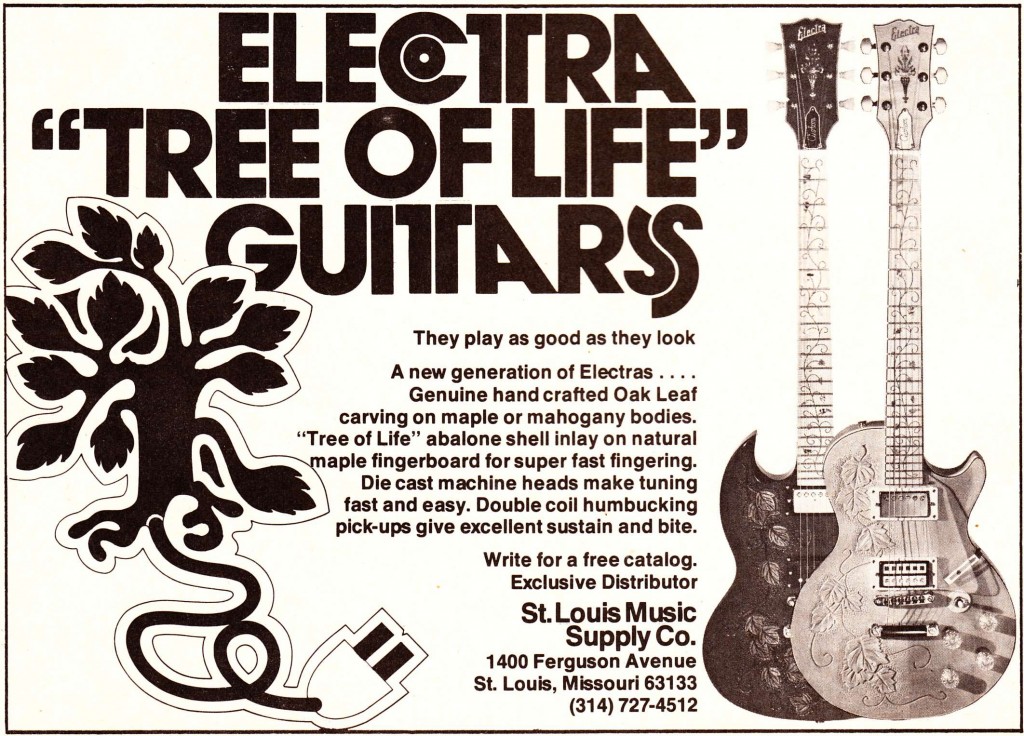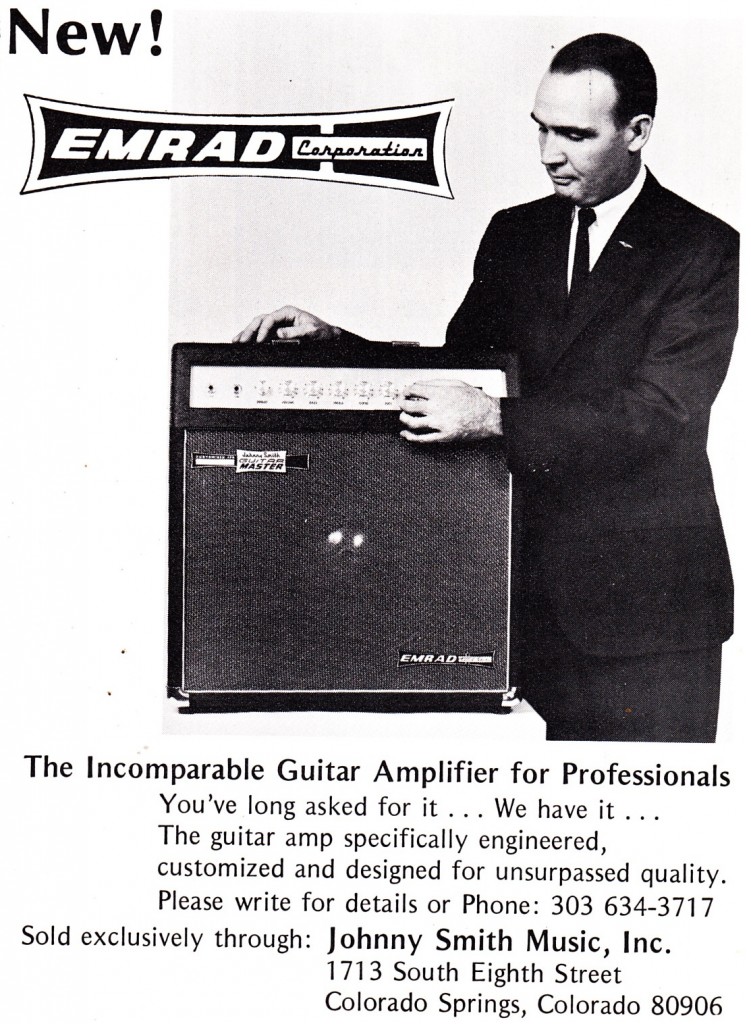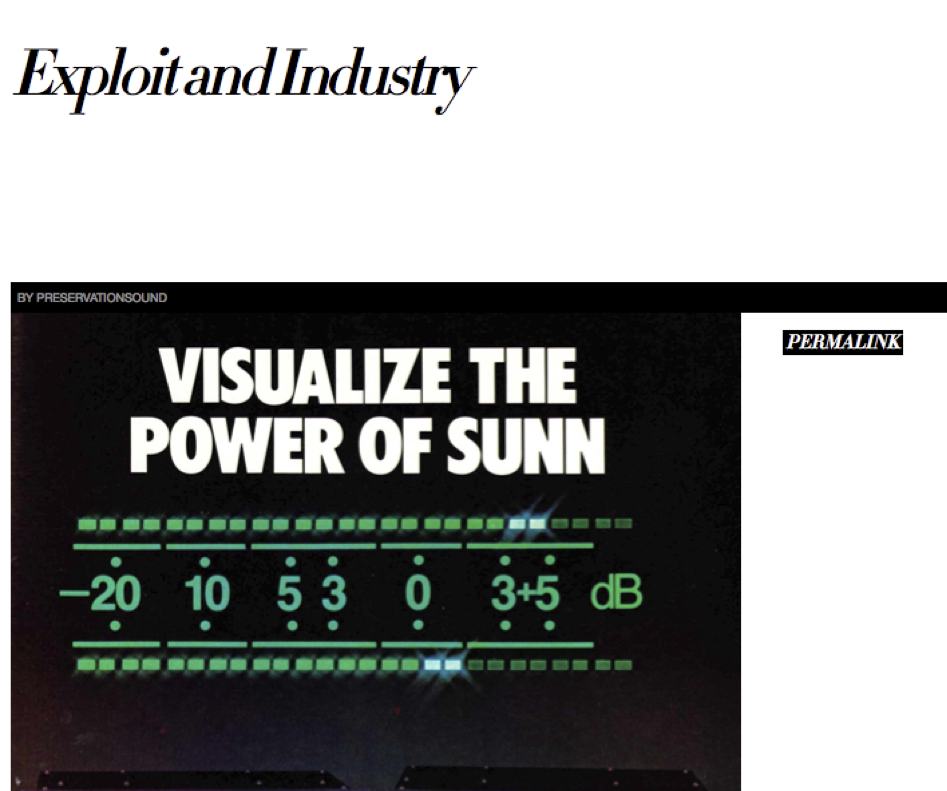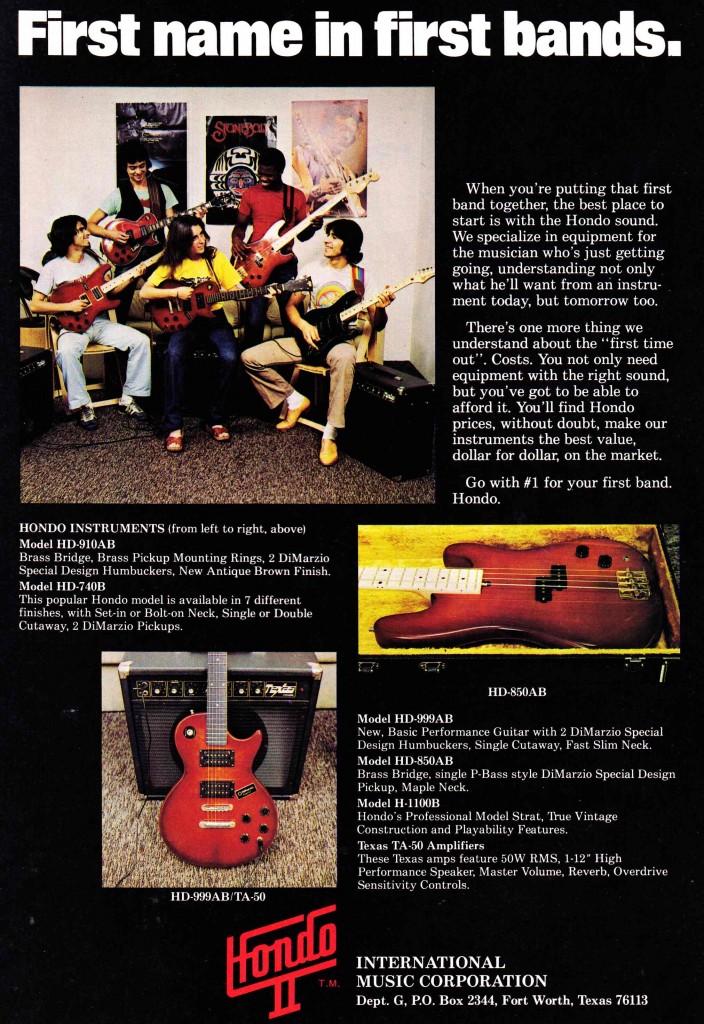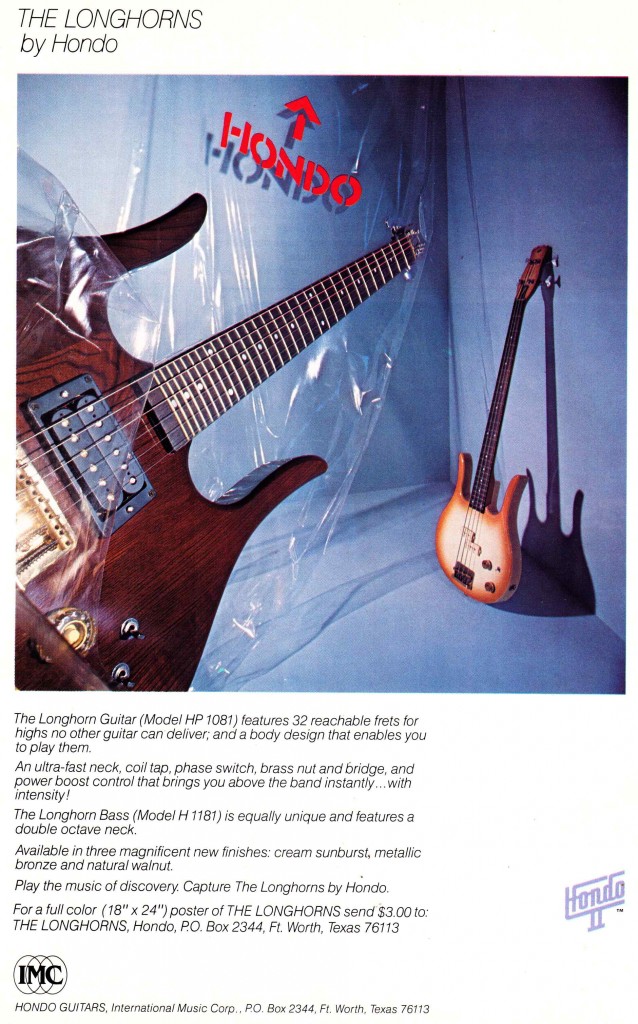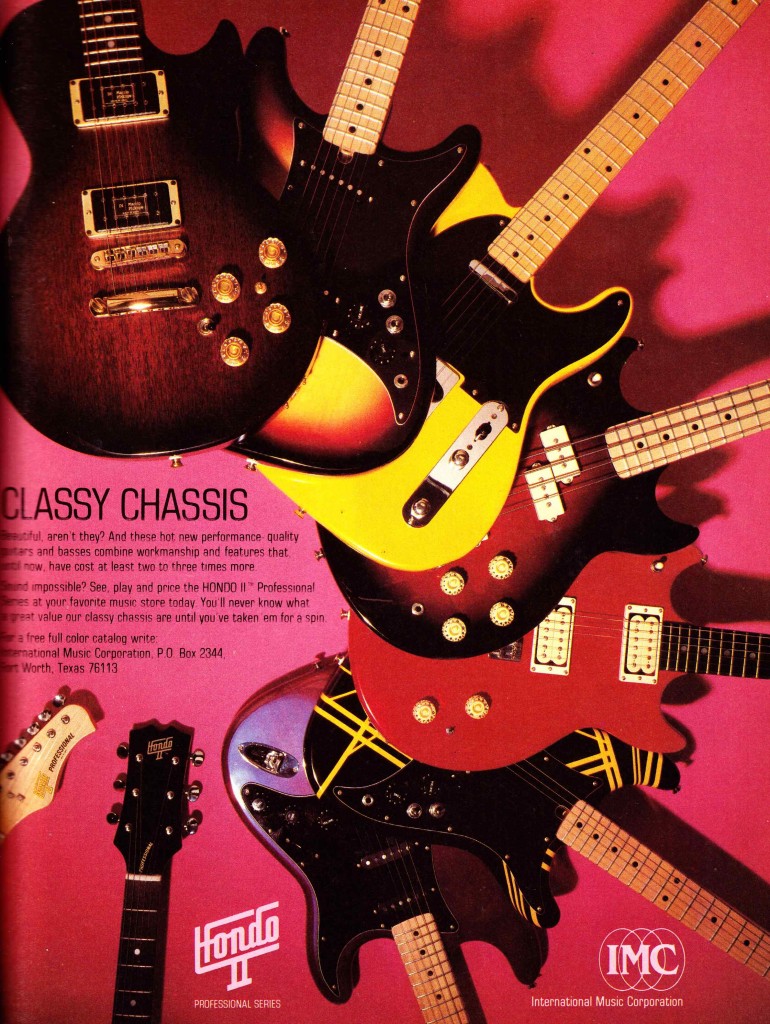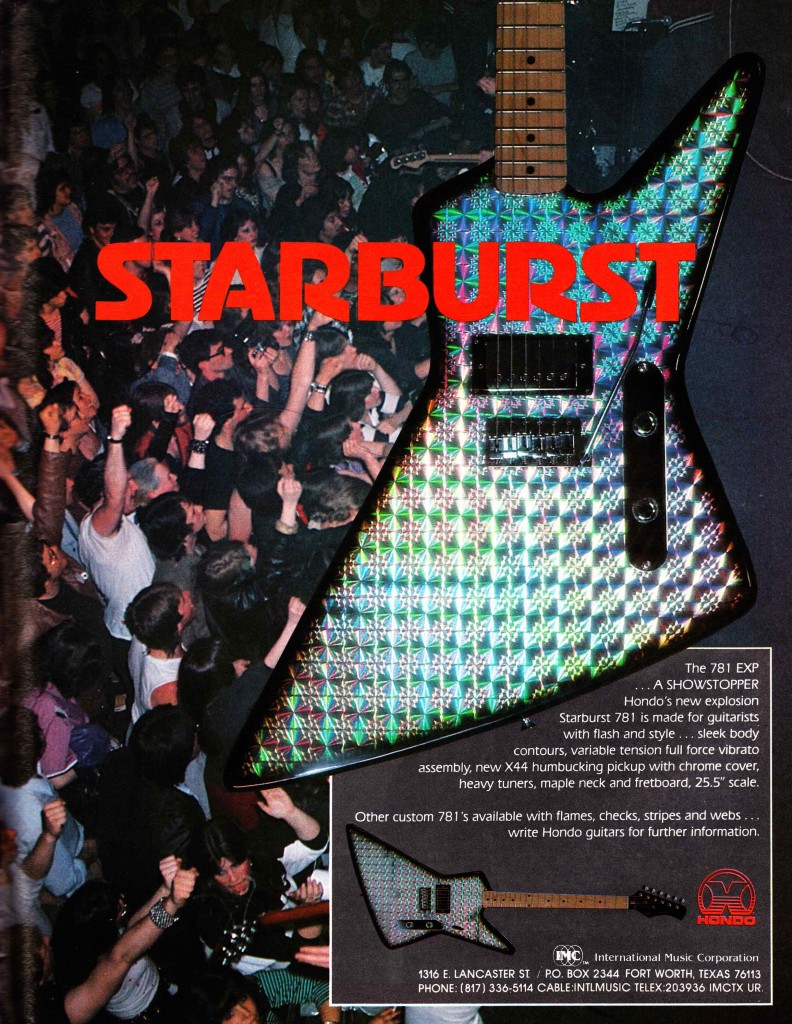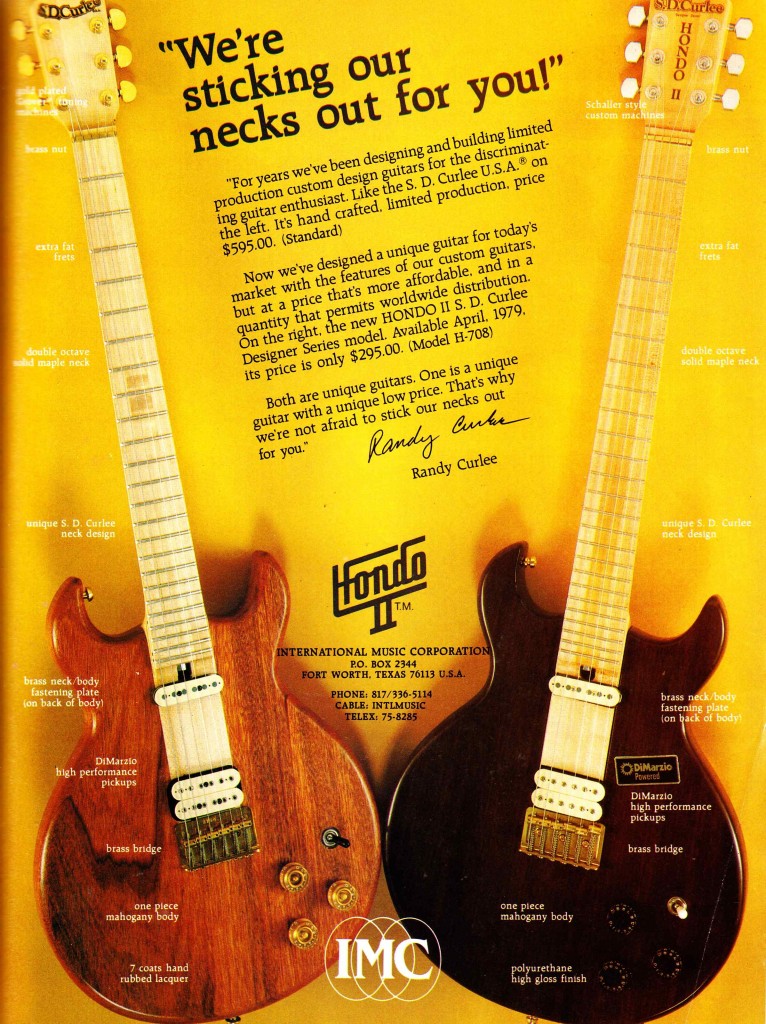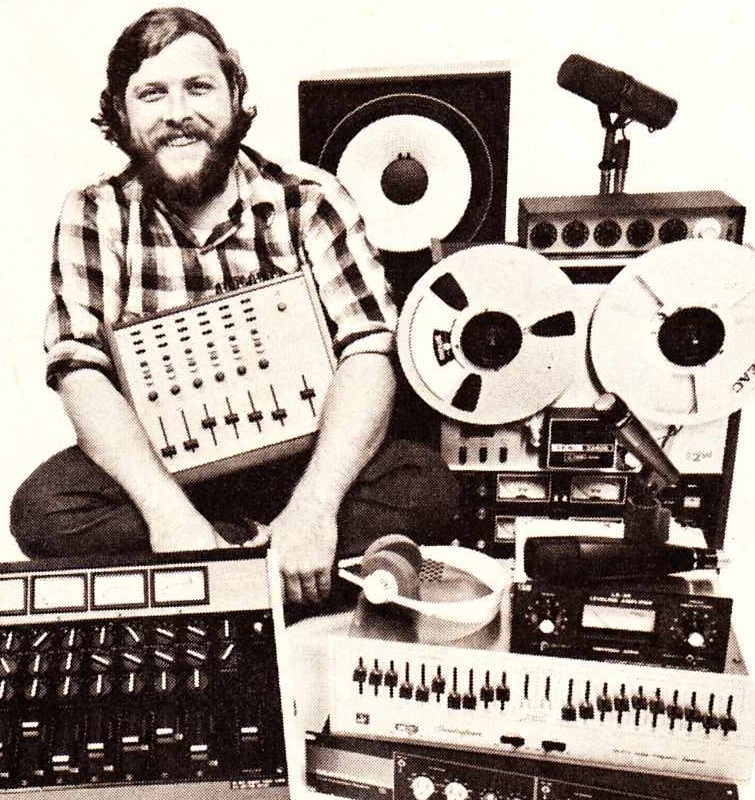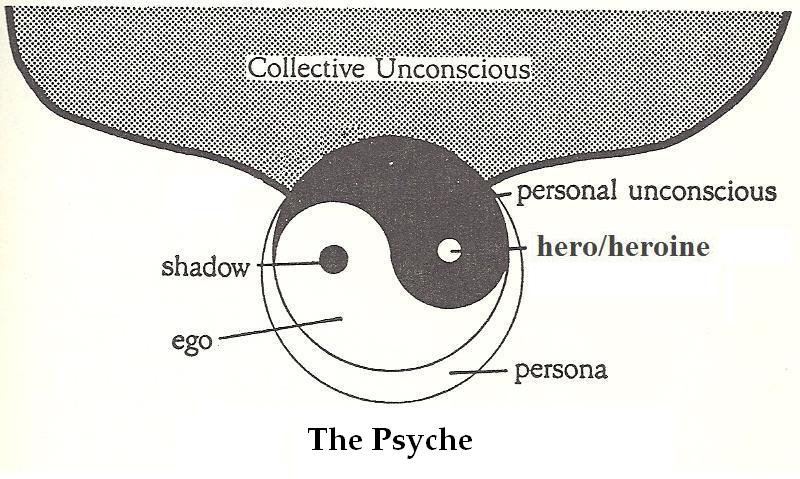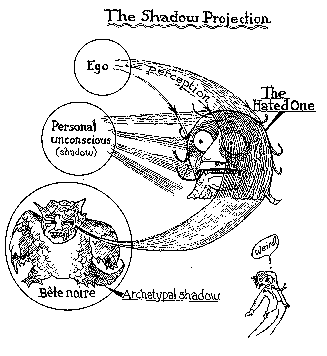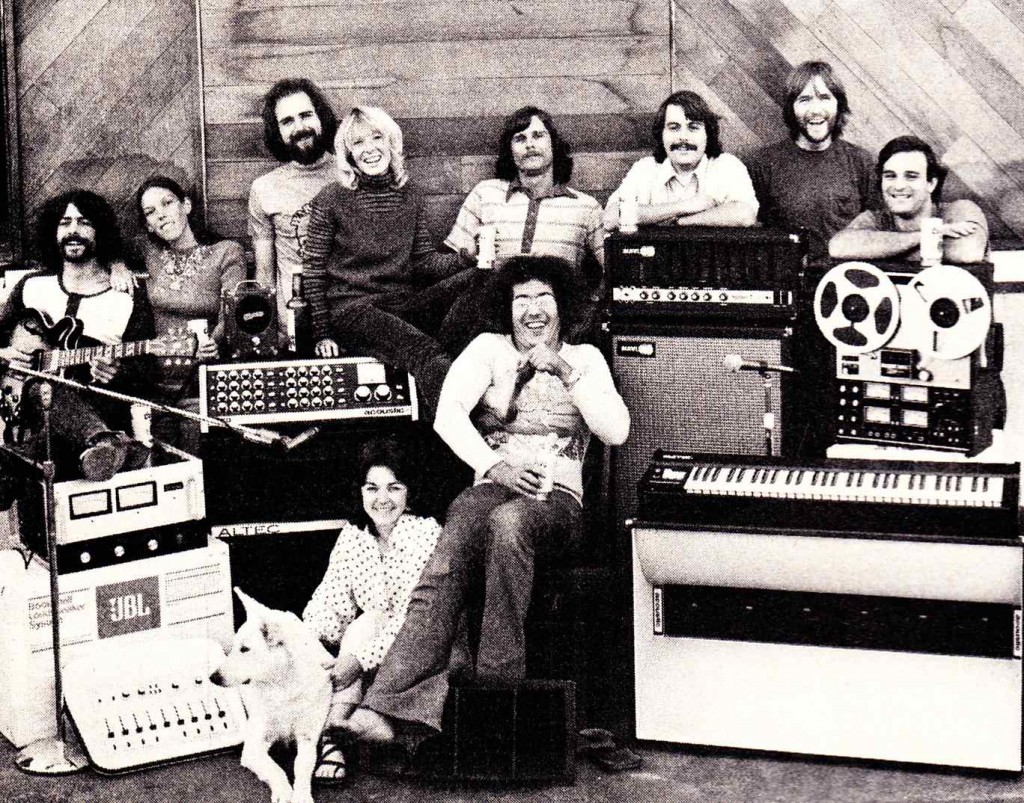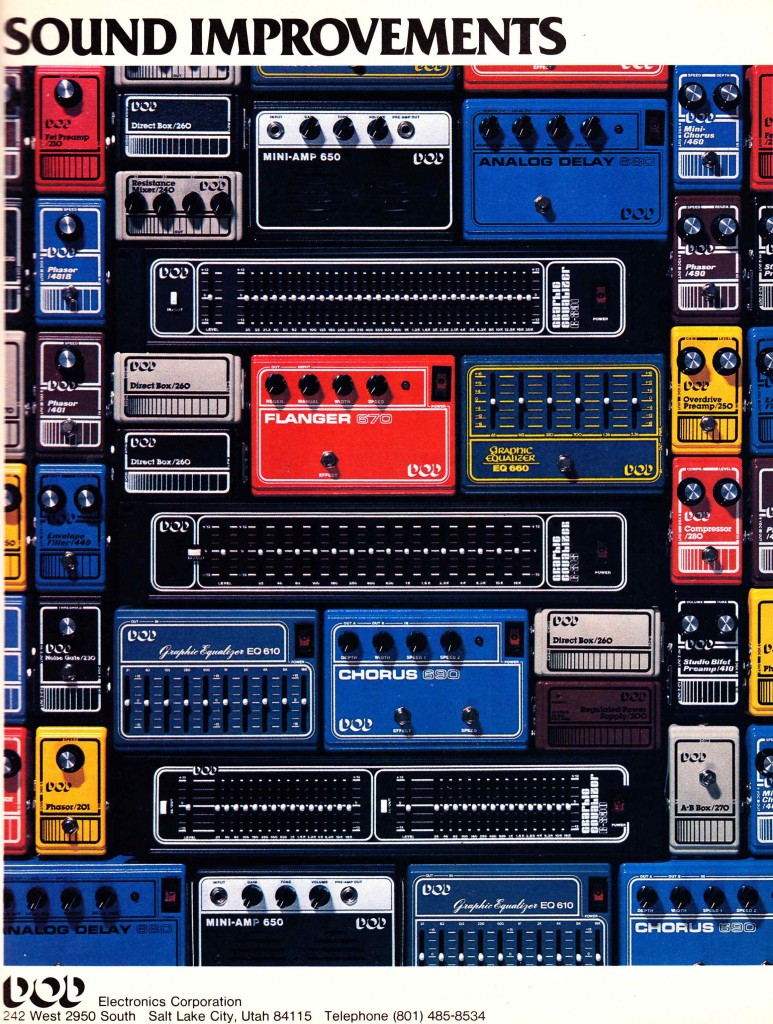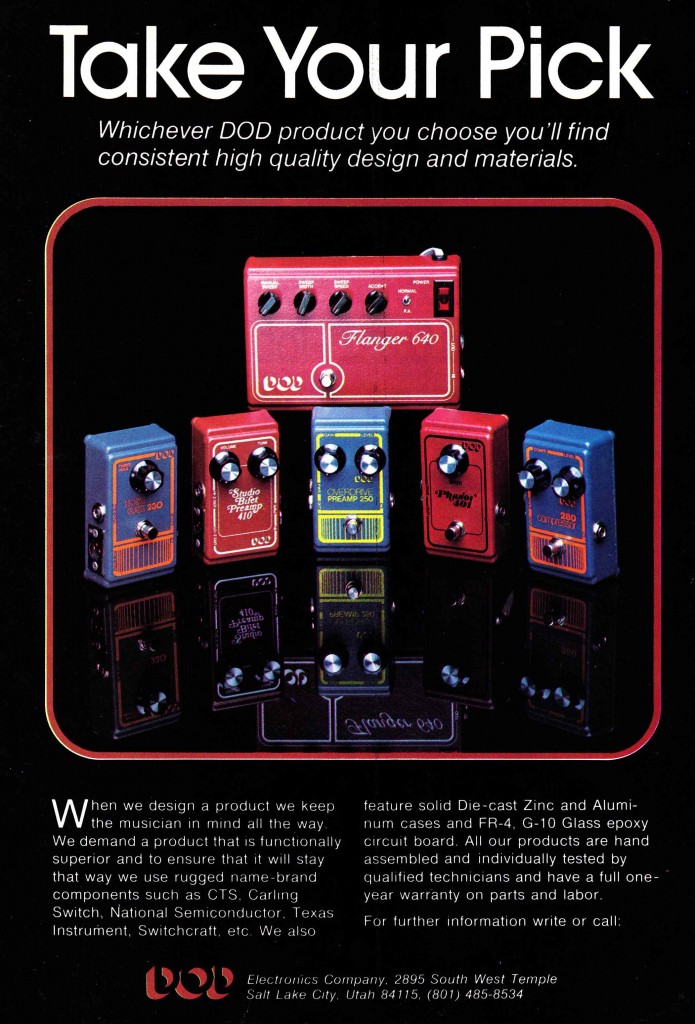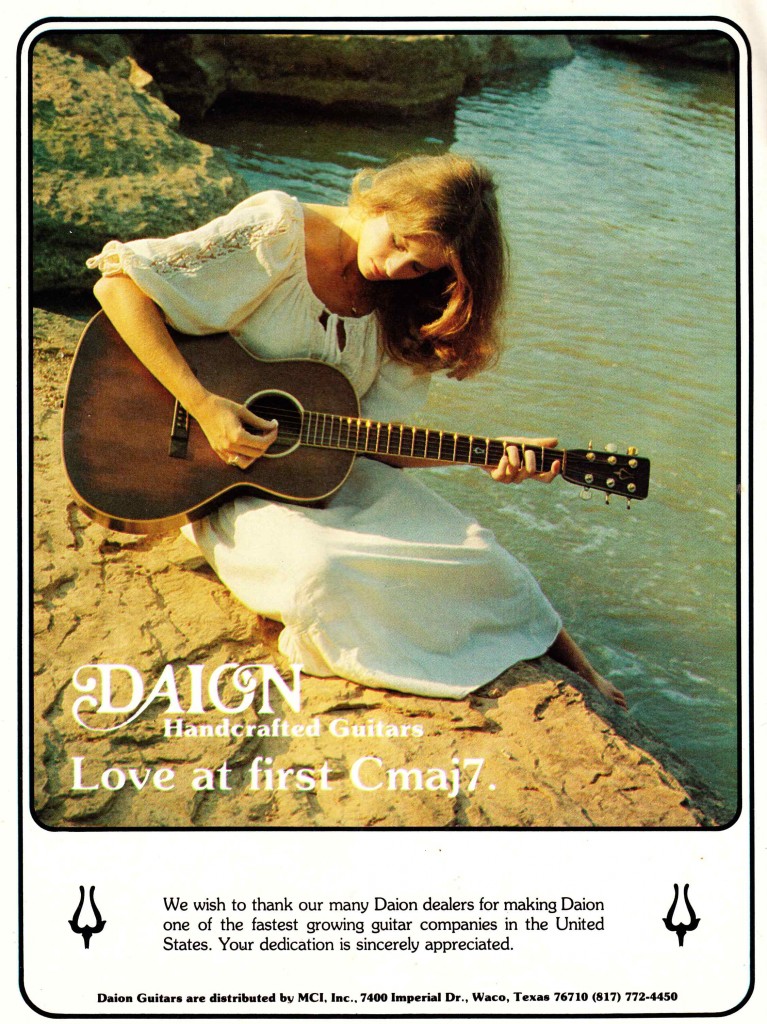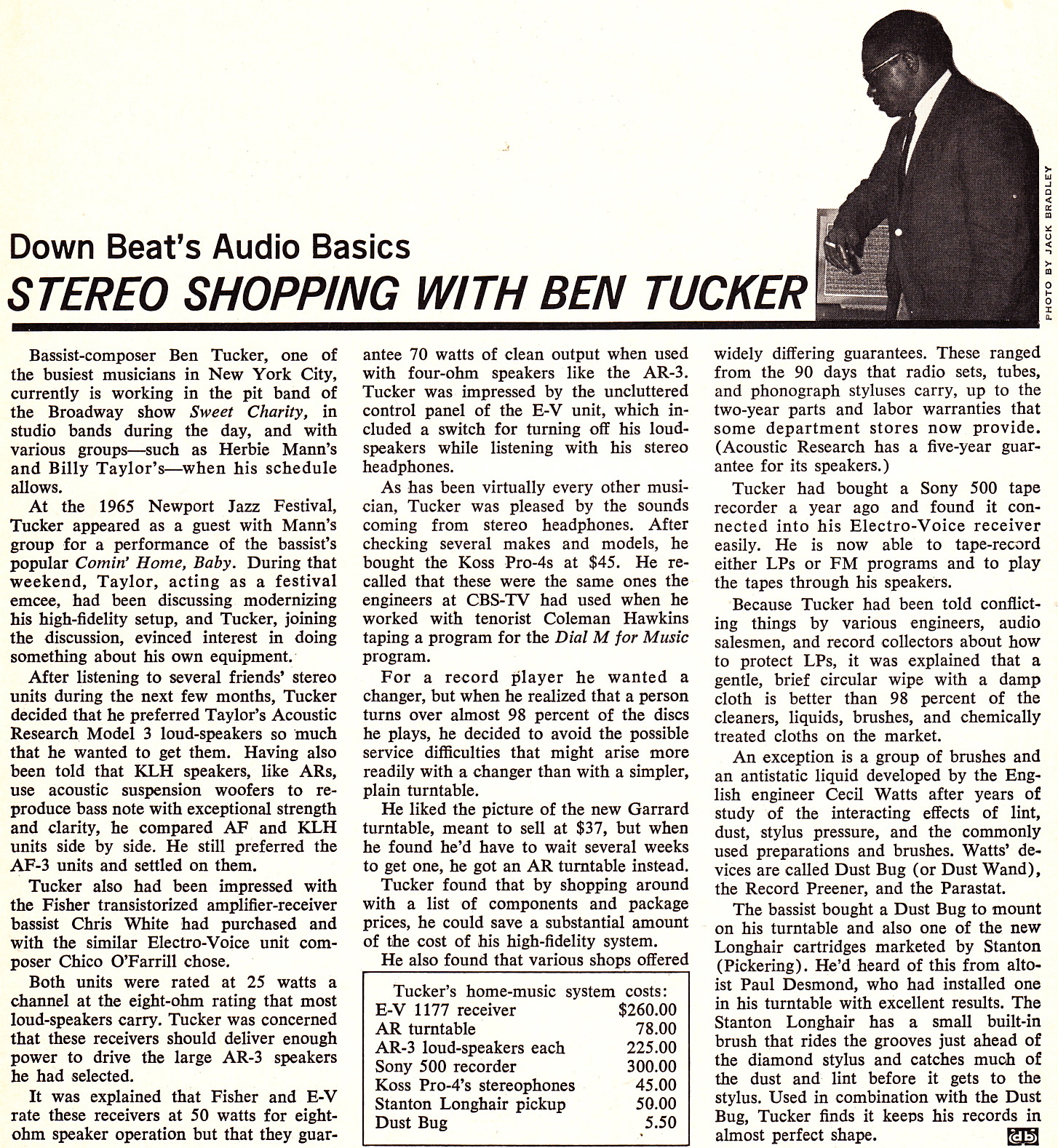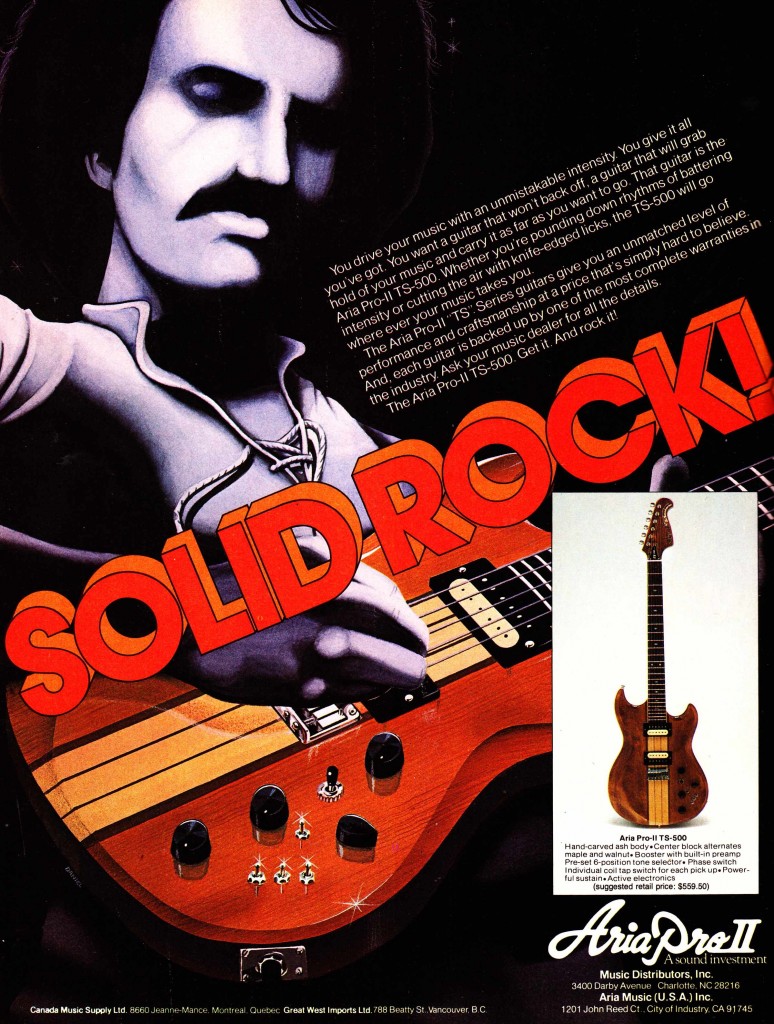 The Aria Pro-II TS-500. It’s a super-strat, it’s a hippie sandwich, it’s a mock BC Rich… Aria II was better known for their basses but plenty of guitars were sold as well. All of the guitars in this post were once common sights at pawn shops and ‘somewhere in the back’ of yr neighborhood music store. Many were made by the Japanese Matsumoku corporation and then sold in a variety of brand-names around the world. I don’t see them too often any longer, except for the occasional flea-market appearance. Since they had neither the baby-boomer appeal of Gibson/Fender/Gretsch nor the flash of 80’s shred-axes, these things traded in the $100 range for decades. Now, like the mustache, some cachet seems to be building around them and prices have risen to the $500 – $1000 area.
The Aria Pro-II TS-500. It’s a super-strat, it’s a hippie sandwich, it’s a mock BC Rich… Aria II was better known for their basses but plenty of guitars were sold as well. All of the guitars in this post were once common sights at pawn shops and ‘somewhere in the back’ of yr neighborhood music store. Many were made by the Japanese Matsumoku corporation and then sold in a variety of brand-names around the world. I don’t see them too often any longer, except for the occasional flea-market appearance. Since they had neither the baby-boomer appeal of Gibson/Fender/Gretsch nor the flash of 80’s shred-axes, these things traded in the $100 range for decades. Now, like the mustache, some cachet seems to be building around them and prices have risen to the $500 – $1000 area.
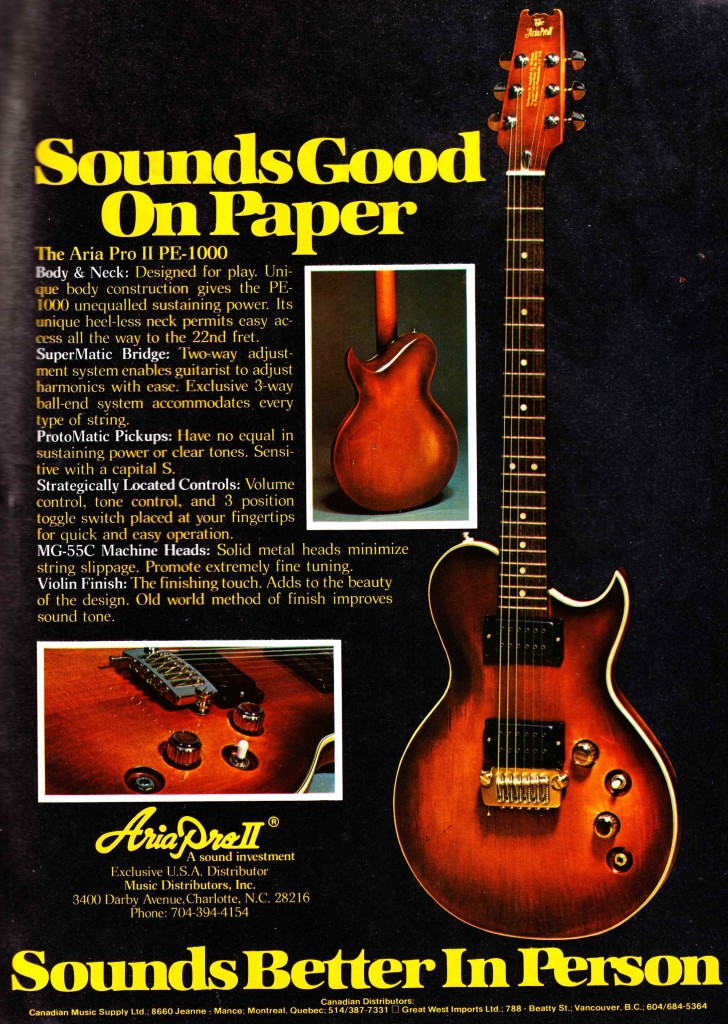 The Aria Pro II PE-1000 of 1979. I can recall playing some of the PE-series decades ago; they were very fine guitars; note the heelless neck.
The Aria Pro II PE-1000 of 1979. I can recall playing some of the PE-series decades ago; they were very fine guitars; note the heelless neck.
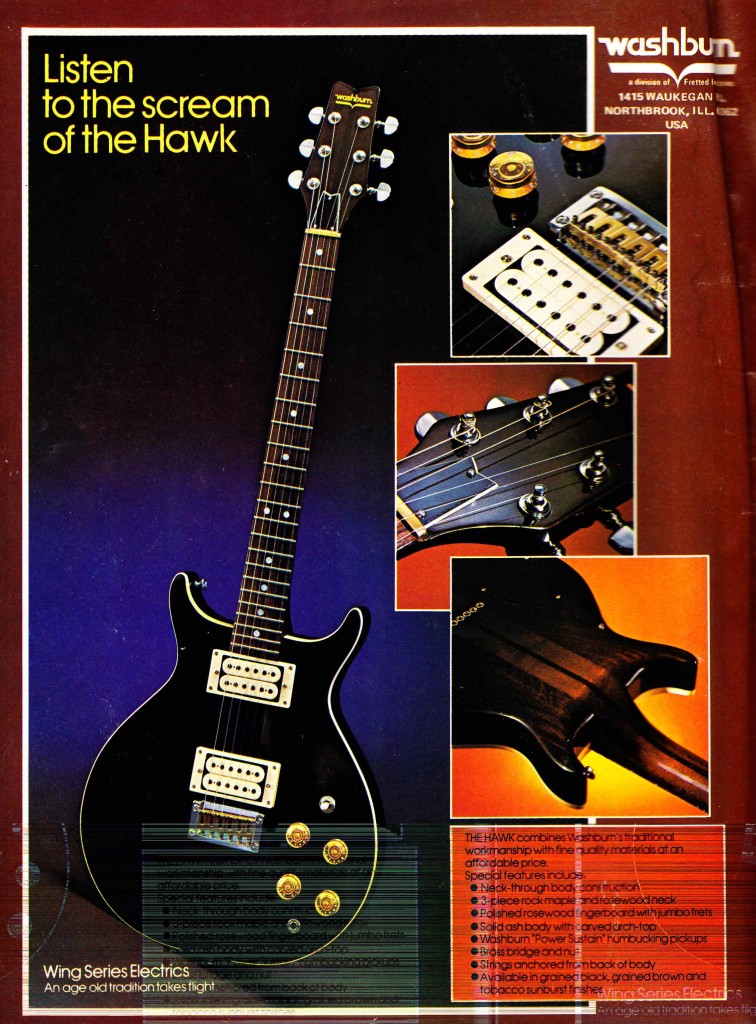 The Washburn Hawk of 1979, a good-quality instrument from their Wing series.
The Washburn Hawk of 1979, a good-quality instrument from their Wing series.
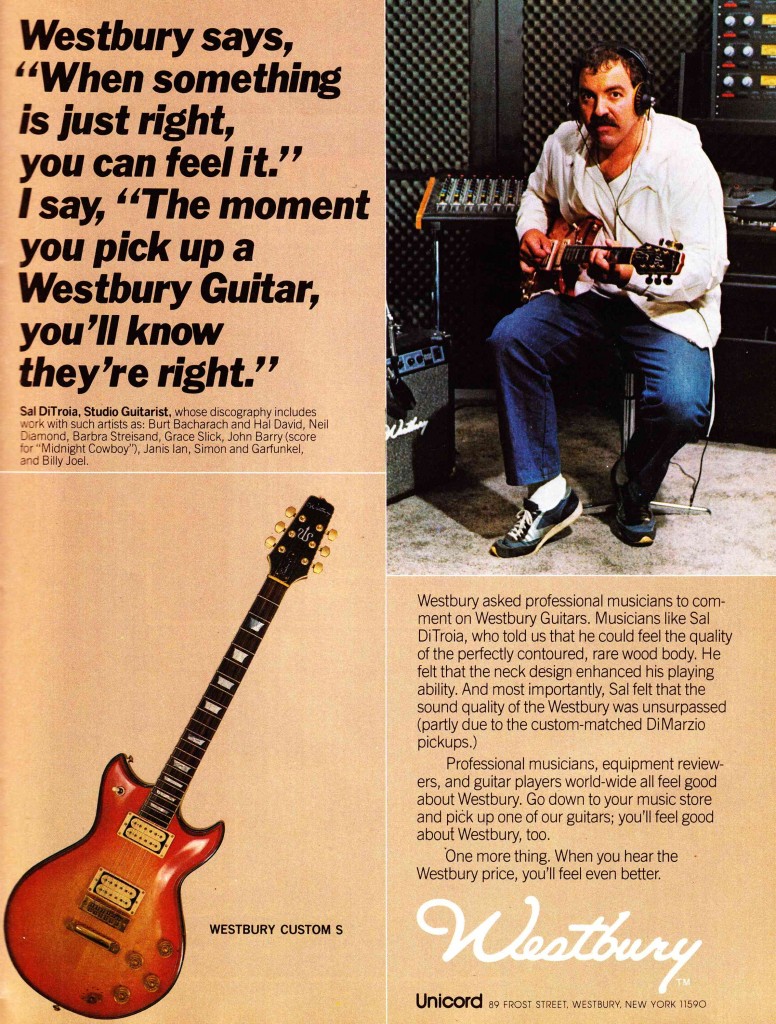 The Westbury Custom S circa 1981, imported by Unicord (importers of Marshall/Korg/etc…). Note the similarities to the Aria Pro IIs.
The Westbury Custom S circa 1981, imported by Unicord (importers of Marshall/Korg/etc…). Note the similarities to the Aria Pro IIs.
Any Matsumoku collectors out there? Any know of any relevant players using these things nowadays?
